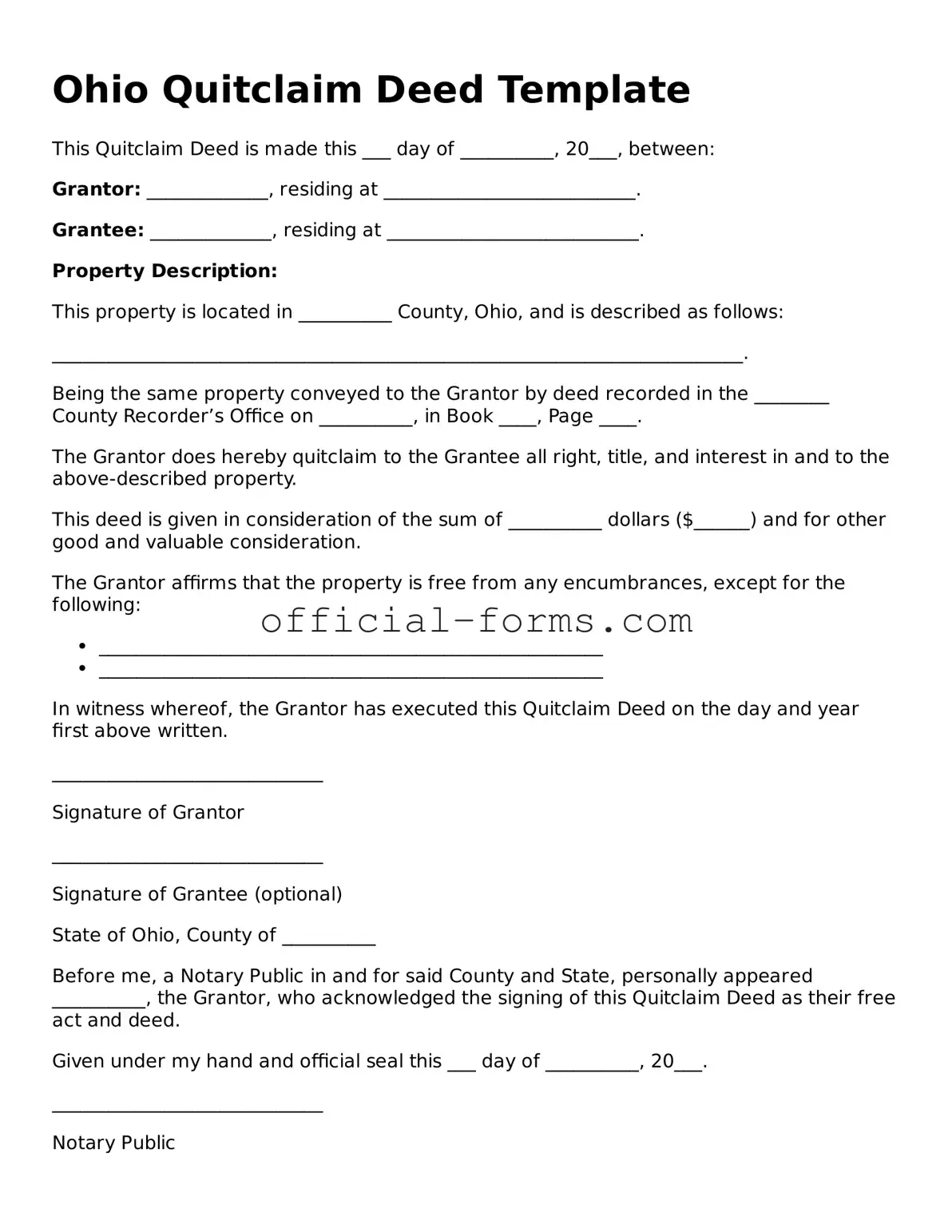Completing a Quitclaim Deed form in Ohio can be straightforward, but many individuals make common mistakes that can lead to complications. One frequent error is failing to include the correct legal description of the property. This description must be precise and should match what is recorded with the county auditor. Omitting or miswriting this information can result in the deed being deemed invalid.
Another mistake involves incorrect names. When filling out the form, it is crucial to use the full legal names of all parties involved. Abbreviations, nicknames, or incorrect spellings can cause issues later, especially if disputes arise regarding ownership.
People often overlook the need for notarization. A Quitclaim Deed must be signed in the presence of a notary public to be legally binding. Failing to obtain a notarized signature can render the deed unenforceable.
In addition, some individuals neglect to provide the appropriate consideration amount. Even if the transfer is a gift, a nominal amount, such as $1, should be included. This demonstrates that a transaction has occurred, which is important for legal purposes.
Another common error is not including the grantee's address. The form requires the address of the person receiving the property. Without this information, the deed may not be properly recorded, leading to potential complications in future transactions.
People sometimes forget to check for existing liens or encumbrances on the property. A Quitclaim Deed does not remove these issues; it simply transfers ownership. Buyers should conduct due diligence to ensure they are aware of any claims against the property.
Additionally, failing to file the deed with the appropriate county office is a significant mistake. Once the form is completed and notarized, it must be recorded to provide public notice of the ownership change. Neglecting this step can lead to confusion about property ownership.
Another oversight is not understanding the implications of a Quitclaim Deed. This type of deed transfers whatever interest the grantor has in the property, but it does not guarantee that the grantor holds any interest. Buyers should be aware of this limitation.
Some individuals also fail to consult with a legal professional before completing the form. While it may seem simple, the nuances of property law can be complex. Seeking legal advice can help avoid costly mistakes.
Lastly, people may not keep a copy of the completed Quitclaim Deed for their records. Having a copy is essential for future reference, especially if disputes arise or if the property is sold again. Maintaining accurate records is a fundamental part of property ownership.
